[category science-report]
During this past week, Crew ARES has continuously worked on their research. Our experiments cover a large range of topics and we hope to get good results out of our efforts. We still need to collect the data and work hard during this next week to exploit our simulation time in the most efficient way possible. Here is how our experiments are advancing.
“Confinement FOMO” – Aglaé Sacré
FOMO, “Fear of missing out”, can appear when we are cut out of society. The Mars simulation completely cuts the crew off of the network and the outer world, which makes it the best place to study how the lack of social media affects the mental condition of not wanting to miss out on something. The crew answered some anonymous questionnaires before leaving and were asked to check their social media usage data on their phone to realise how much time they were actually spending online on a daily basis. During this first week, different anonymous questionnaires were completed where we assess how we feel without social media and if we feel like we’re missing out on something. This way Aglaé could compare how the crew used to use social media, how they predicted they would live without it and how they actually lived without it.
As Crew Journalist, she writes the daily summaries and keeps the world notified on what work we do every day. She is also taking photos and videos to document and present after our mission.
“Radiation: how attacked are we?” – Thomas Stinglhamber
Every day, everywhere, different types of radiation attack us. On Mars, radiation will be way more brutal and dangerous than on Earth due to the difference of the atmosphere. It is thus very important to be able to have easy ways to measure the dosage of this radiation. 
Thanks to BeSure’s technology, Thomas has installed dosimeters both inside and outside the station to check how radiation proof the station actually is. He also gave the crewmates an individual dosimeter that they wear at all times to measure their personal dosage. He will collect all their data at the end of the simulation. Complementary to this, Thomas uses a Gamma detector to map out the dosage of the soil around the station by searching for radioactive isotopes near the station. He has already completed a 3-hour EVA where he took measures at different coordinates that he mapped out thanks to a Python grid. He still needs to do two EVA’s to measure the whole region close to the base. He is also trying to combine his grid with Augustin’s 3D maps.
“High Speed Rotor Manufacturing” – Gwenael le Bussy
The Martian atmosphere is a hundred times less dense than the one on Earth. This means that every flying object we would like to use for observation, scouting or measurements needs to be adapted to the physics of that new environment. Like the ones on Ingenuity, the rotor blades have to have a special shape. Naturally, every piece of equipment may encounter a problem and need to be repaired or replaced. The problem cannot be predicted precisely in advance, which means that we need an adaptable solution. Gwenael will study how he can use 3D printing to model (with SolidWorks with NACA profile) and print rotor blades for the Martian atmosphere. Afterwards, he will test them with a high speed motor and measure their thrust with a scale. The 3D printer was successfully reconstructed and has launched a couple of test prints. One of the test prints is an oven knob, we are trying to see if we can make one that works better than the ones currently used. Gwenael has started designing a blade and will start printing in the days to come.
Parallel to his aerodynamics work, our Crew Astronomer has already observed the Sun with the solar observatory but is yet to take pictures as weather has not been favourable. He has also used the New Mexico observatory remotely to observe M63 and M51 and is currently working on the editing of the photos.
“Space Oddity” – Ioana Dimitrova
Long term spaceflight separates astronauts from society and their loved ones for months and months. It also keeps them confined without leaving them a possibility to feel free and do whatever they want. This can lead to mental health problems, stress, tensions within the team and can put the mission at risk. Music could be a cheap, easily transportable and effective solution to this problem. Choosing your personal music to help you relax could have multiple benefits. It could help you transport yourself elsewhere, work through your emotions and stimulate your senses. Ioana tests if this theory is true by measuring cardiac parameters during relaxing times with and without music chosen by the crew. The technology used for the measurements is KINO by HeartKinetics. It is an app that you put on your chest and that analyses your heart variability. Added to that, a blood pressure monitor is used to take blood pressure measurements. Before the measurement, she also asks the crew to complete an anonymous Self Perceived Stress Test to get some trends on how they feel throughout the mission and to correlate it with days they listen to music. Sadly, the KINO app had technical difficulties and we had to change our instrument, but everything is back on track and measurements are taking place every day. Ioana has started working on her spreadsheets, gathering data and pre-analysing it.
Our Crew Engineer has also kept busy by fixing a suit, a headset and managing water consumption.
“Hide and seek during radiation storms” – Augustin Tribolet
As we mentioned earlier, radiation is an important factor in a Mars mission. If we are to live there or try to make bacteria or plants survive, we must find the most protected areas on the surface. An easy way to be able to find those places could be to use a drone to map out the area and to find these places. Augustin will use a drone to scan the surface and generate a 3D model by photogrammetry. This digital technique allows us to build the 3D model from photographic images. He works closely with Agnes who studies extremophiles to analyse how effective his hiding places actually are but also with Thomas to map out his radiation with the 3D models. Augustin has already completed 3 EVA’s during which he mapped out the station, the Special Region and Marble’s Rituals. We had a small scare as the drone crashed during one of the EVA’s but the blade has been replaced and everything is nominal now. When he is not on EVA, he exports the images and combines them to create the 3D interactive maps.
As Green Hab Officer, he has already collected 500g of cherry tomatoes and 100g of different herbs that he will dry to make spices for our team as well as the next teams.
“Mars well-being” – Ttele Hiriart
Confinement, isolation, extreme conditions… All these factors affect mental health and team dynamics. How is the well-being of the crew members evolving? How does the team work together? How do the dynamics evolve? Which teamwork tools actually work? During the mission, Ttele will keep a diary of her observations of the team and different crewmates. She will compare these observations with the ones made by other mission simulations in Antarctica for example. At the end of the mission, she will present her observations of the ups and downs of the mission, how the team interacted and different lessons the team has learned or must work on for future missions. During the day, she observes how effectively every crewmember works on their experiment, how their motivation changes and how they handle difficult decisions, tensions. Some examples include: decisions made during EVA’s when plans have to change due to lack of time, technical difficulties in the station, decision taking when not everyone has the same opinion, how the team reacts when somebody is down, the effect of the fatigue… She has started introducing some teamwork exercises at the end of day to work on the team cohesion. All this is documented in her diary and she takes notes of her observations continuously.
“I will survive” – Agnes Dekeyser
As you may know, the planet Mars is currently not habitable for life as we know it due to its extreme conditions. We are talking about an atmospheric pressure that is 1% of that found on Earth (at sea level), an average temperature of -60°C, and an atmosphere composed of only 0.1% oxygen.
However, there are microorganisms on Earth that could withstand such conditions. They are called “extremophiles”. These are microorganisms that live in conditions that are lethal to most other microorganisms. They live on the seabed, in the Earth’s crust, in glaciers, and in many other extreme environments.
During this simulated mission on the planet Mars, our Crew Executive Officer will study the viability of two strains of extremophiles after exposure to MDRS environmental conditions : Deinococcus Radiodurans and Cupriavidus Metallidurans.
Each strain will be exposed outside for 8 days in anaerobic condition. Their viability will be compared to their unexposed analogues based on CFUs (Colony-Forming-Units) analysis.
She also works closely with Augustin and Thomas to find a place with less radiation around the base where her bacteria could survive better. Agnes spent her first days culturing her extremophiles and used one of her EVA’s to take them to North Ridge, a ridge with a higher altitude than the station’s. She also placed their analog inside the station.
SOL 12 will be the day she collects her cultures and analyses the difference in viability. She used an Arduino to calculate parameters such as temperature, pressure and altitude at North Ridge. On top of this experiment, she launched a weather balloon on top of North Ridge with an Arduino as well to test if this could be a useful way to calculate parameters if bacteria were to be put inside of the balloon for a future experiment. Sadly, the balloon did not last long as it did not have enough helium. She will be checking her “outside” bacteria every two days during her EVA’s.
“We are what we eat” – Antoine de Barquin
The goal of Antoine’s experiment is to understand the impact of specific nutrition and confinement on the intestinal flora of astronauts. To conduct this study, a sample of each crew member was taken before departure to perform an analysis of intestinal bacteria by targeted metagenomics. This analysis is performed at the LIMS MBnext laboratory which collaborates with our crew for this experiment. The crew will give “post-mission” samples. This way, Antoine will be able to compare and analyse how freeze-dried food affected everyone’s microbiota. Every day, Antoine monitors everything the crew eats, type of food, quantities, time of the day etc. He will start analysing the data during the mission and will conclude the analysis after the return on Earth. He was also wondering how working the soil will affect the two crew members who work the most in the GreenHab. People who garden have higher levels of Mycobacterium vaccae, a bacteria found in the soil that stimulates production of serotonin and functions as an antidepressant. He thinks it will be interesting to see if our two gardeners have higher levels of it when he analyses their samples upon our return to Earth.


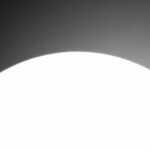
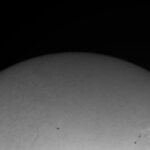
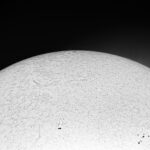

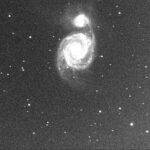
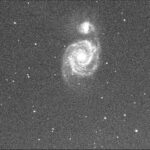
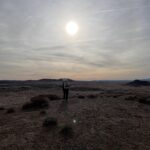
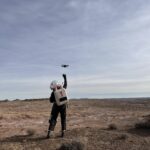
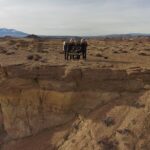
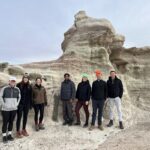
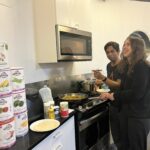
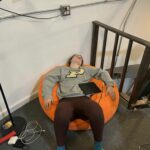
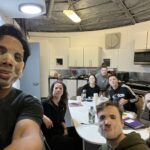
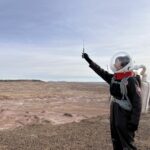
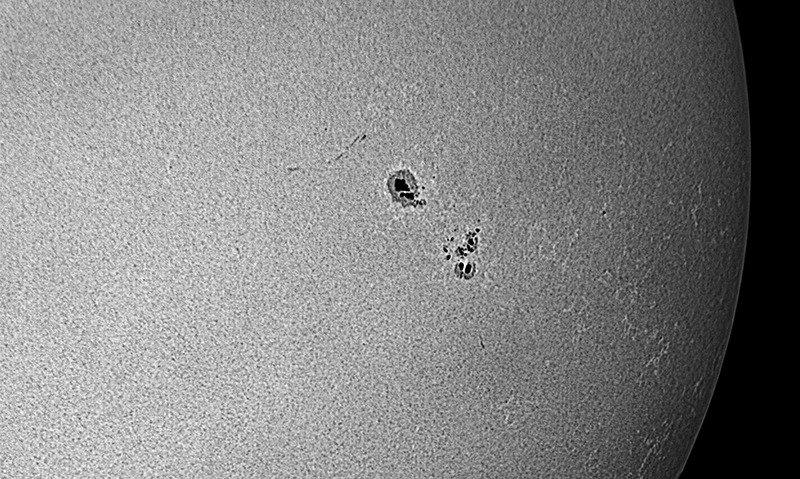
You must be logged in to post a comment.